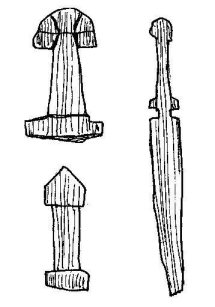
Fig 1: The remains of three wooden swords, Novgorod, 10th century.
Aelflaed of the Weald (India Ollerenshaw), 2005
So, you and your growing family 'play' Norse personae? Naturally, you have your feasting gear just right and a beautiful Viking tent to sleep in over Festival. Your children are perfect little replicas of Norse infancy.... except for the plastic dolls and Tonka trucks. Oops. Well, we can do something about that.
There is plenty of information about the toys used by medieval children in general, and any of these items would probably look much nicer than the plastic monstrosities. However, we can still go one better - actual Viking toys do exist, and it may surprise you to learn just how simple they are to reproduce. Absolute purists may find the range a little limited, but with some extrapolation, creating a hoard of Norse toys is completely possible. There are toys for boys and girls, active games and imaginative ones, and no great difficulty in suiting the needs of different age-groups.
What do children need in a toy? Importantly, things that reflect their own limited experience of the world. In contrast, they also enjoy things that are exciting, beyond the everyday. Children need things that awaken imagination, things that display and increase physical skills and things that offer mental exercise, such as strategy games. Board games, which have not been dealt with here, would have been used by both young and old for pleasure and mental stimulation. (For those who wish to pursue this aspect of family life, there are books and websites aplenty to teach you Norse games of strategy.) From the child's point of view, a toy need not be custom-built - it may be homemade or even a cast-off picked up from the rubbish heap. The essential needs of child's play are the same now as they have always been, so it should surprise no one to discover that there is a list of archetypal toys that recur throughout history and across cultures. Norse children were no different from the rest.
In this paper I aim to give detailed information for a range of extant pieces, enabling concerned re-enactors to produce toys that will fill the needs of the child and look great to any Laurels passing by. First of all, however, a little background:
For the sake of clarity, I am defining the period of Viking expansion in Europe as between 800 and 1100AD. Prior to this, the central Scandinavian kingdoms of Denmark, Norway and Sweden already existed, but had not yet colonised other areas. During the ninth century, settlers from one or other of these three nations moved to Iceland and the Faroes, Greenland, Russia, England, Normandy, Scotland and Dublin.
The true Vikings, fearsome warriors, penetrated almost every corner of the known world. However, the culture from which these invaders came was basically pastoral and quite civilised. Raiding was seen as a useful way of funding political ventures back home, or of paying off the mortgage. Many of the warriors were farmers in the off-season: they went home to their wives and children, and normal family pursuits prevailed. Children are the driving force behind the creation of toys, and we must therefore seek information where Scandinavian families lived and played, rather than in areas which were merely under military control.
Once invaders began to colonise an area where there was an existing population, it took about a hundred and fifty years for them to become part of the local culture. For instance, Swedes settled among the Slavs, founding Novgorod in the 860's, and moving their capital to Kiev in the 880's. The Scandinavian ruling classes were giving their children Slavic names in the mid-tenth century, and were thoroughly submersed in Slavic language and culture by the eleventh century. From that time, artefacts in that part of the world can no longer be truly identified as 'Viking'; the same is true for other settlements. Colonists in Iceland and Greenland, which had been largely empty anyway, were not subject to this process. Greenland held sternly to its parent culture until its premature end, while Iceland and the three original nations grew into the Romanesque age with the rest of Europe.
The Norse were literate, and used runes for inscriptions, announcements and even correspondence. However, the minimal runic alphabet was not employed for long compositions, for which they had a rich oral tradition of prose and verse. The numerous sagas were not recorded until at least the twelfth century, and are not as sure a guide to history as was once thought. Although as evidence they are distorted, these works do commemorate the deeds of northern heroes, and also incorporate remembered fragments of ancient stories and poems. They are a link to the social order and customs of Viking times.
Sadly, toys are barely mentioned within this body of literature. The saga of the Volsungs, recorded in the thirteenth century, refers to a single plaything, belonging to a pair of royal infants. It is gold, has at least one golden ring attached, and rolls across the floor with the children in pursuit. It is not described as a ball (to which there are a few saga references, see below). It might perhaps be some kind of rattle, but the record is not sufficiently clear to allow for pronouncements (The Story of the Volsungs, Electronic Text).
There is no primary pictorial source for Viking toys that I know of, and the written record for the pastimes of Norse youngsters is scanty. The bulk of the evidence relating to toys of the Viking age must perforce be archaeological. Fortunately, the Norse settled in many parts of Europe and left plenty of traces, although none of the toys yet discovered are so intricate as the golden bauble of the Volsungasaga. It will become obvious that the majority of my information comes out of the digs at Novgorod, which have produced numerous toys from the Viking and medieval periods. The environmental conditions of that town, combined with sustained labour and research over many years, have resulted in a wonderful base of knowledge. The richness of Novgorod is unmatched as yet by other sites, even thogh Kolchin's excellent study of wooden artefacts largely ignores the many mechanical toys that have been found. Continuing digs such as those at York and Dublin are producing a steadily increasing range of finds.
Although founded by Scandinavians, much of the general population of Novgorod would have been Slavic, and, as mentioned above, the Norsemen who settled there gradually merged with the host culture. Extensive digs at Novgorod have apparently produced few specifically Norse remains. Fortunately, early toys discovered in the town do share similarities with finds from elsewhere in the Norse world, and this is sufficient for my current purposes.
Of the hundreds of wooden items from Novgorod, only a few have been analysed to determine the type of wood from which they are made. Kolchin surveys the types of wood used by the craftsmen of Novgorod for particular tasks, and states that birch was used especially for carving household items, including toys, while maple and mountain ash, both growing within the local area, were used mainly for turned objects (Kolchin, pp. 20 - 21). As none of the early-period toys are turned, we can presume that birch wood is the most likely material for all the Viking toys from this area. It is sensible to add the caveat that toys may have been carved from any scrap of timber that came to hand, and to acknowledge the paucity of analysis with which we are working.
The aesthetic element of these artefacts includes both the basic shape and any decorative touches applied to the finished objects. The style of Viking toys must spring from the Norse culture, and from the needs and resources of its members. Kolchin gives detailed descriptions, drawings and photographs of numerous figural toys such as dolls and horses. Artistically, the Novgorod figures he shows are simplistic, flattened silhouettes, less than two centimetres thick; their few details are either carved or incised. Their forms are stylised rather than realistic, and this is consonant with finds from more wholly Viking settlements such as at Trondheim and the Faroe Islands. The high degree of stylisation is in keeping with Viking art, where the sinuous bodies of unidentifiable animals (and occasionally people) are represented in impossible positions, entwined with one another in what seems chaos to modern eyes. The extant toys are a different class of carving, in that they each represent a single figure, blockier than the art sculptures and more coherent in form, and yet the trend towards stylisation is still apparent.
The surviving toys from Viking settlements were probably produced for local use. Many would be the work of family members, although it is always possible that some toys were traded between settlements. The fairly standard shape of toy horses from across the area may indicate commercial and social links between communities - or may have been chosen independently by different craftsmen.
The idea of a standard design base is intriguing, and contact between the far-flung settlements seems to have been quite extensive, but our range of evidence is too limited to support any certainty. Boats and swords were copied from adult versions, and do not lend themselves to the question, while tops and balls, with the highest numbers of survivals, are nevertheless not represented outside Novgorod, which is itself slightly removed from purely Viking influences. Some of the surviving toys are crudely fashioned, and were probably made by the children themselves, while others are more finely carved and doubtless the work of artisans. The more carefully crafted items could have been worth trading, although there is no record of toymaking as an industry, anywhere in Europe, until the late fifteenth century. On the whole, it is impossible to document any standard tradition of toy design among Scandinavian communities, although there are similarities among finds from different areas.
Most of the figurines of animals and people are cut in silhouette from flat pieces of wood, and a strong characteristic of both types is a great simplicity of line. Among three-dimensional figures, a single toy cat and one or two human sculptures are known. Kolchin identifies these last as house-spirits rather than dolls. The identification seems to be based on two pieces of evidence: the figures are representations of a peasant man, rather than a woman or a baby; and they have been intricately carved by a skilled craftsman. In contrast, playthings have simplistic outlines and the even the facial areas often lack detail.
The intricate styles of carved decoration on Viking artefacts, from carts to comb cases, are not repeated on the extant toys. Perhaps children's belongings were not considered worth the effort of extensive carving. It is possible that Viking playthings were painted; occasionally, woodcarvings are discovered retaining traces of bright colour. However, the only decorative embellishments to survive on toys from these early days are shallowly incised markings in the wood.
Spinning tops are often finished with horizontal grooves around the belly of the bullet-shape. Some of the incisions are meant to anchor the whipcord in starting the spin, but other markings are decorative, as are the swirling patterns that may be seen on the top faces of various examples. Horses often have some detail carved into their silhouetted forms - most often bridles, sometimes a mane. Stirrups are usually lacking, and were not customary among Norse riders until very late. Human figures usually have incised facial features, and later-period examples sometimes have an indication of clothing. One 'baby' (15th C.) shows a repeated semi-circular pattern as of swaddling, while an earlier doll (13th C.) appears to wear a belt. None of the tenth- to twelfth-century survivals shows clothing, but the pool of examples is naturally very small.
When trying to recreate the playthings of a people, it is helpful to consider carefully the material culture of that group. Every parent knows how readily small children rush to 'help' with tasks you would rather complete in peace, and the ability of children to mimic the actions of those around them is tremendous. So, in addition to consulting the records relating to children, we should look to the artefacts of Norse adulthood for potential playthings - whether stolen from Mama's kitchen or purpose-built in miniature for little hands. No doubt, children of all eras have borrowed cooking vessels for their play, and miniature household items are fairly common in later centuries - perhaps parents grew tired of repeatedly rescuing their best pots from the fields.
Norse craftsmen commonly used steatite (soapstone) to make all kinds of bowls and other domestic vessels for adult purposes. Soapstone vessels were in fact so prevalent in Norway that pottery went out of use (Viking World, p. 107). The Shetland Islands were one of the sources of this useful commodity, and a single miniature bowl carved from steatite has been unearthed there at Jarlshof. Its small size makes it most probably a toy. An image of this item may be seen on the internet at http://www.scran.ac.uk/RB/images/thumb/0098/00984728.jpg. Although there are as yet no further finds, it is likely that other tiny dishes existed for little cooks to use in the Viking equivalent of tea parties.
A steatite millstone from a model horizontal mill (or quern) also comes from the Shetland Islands. It is approximately fist-sized and may be seen at http://www.shetland-heritage.co.uk/amenitytrust/archaeology/unst/UNST4.JPG. A similar miniature was apparently found at Jarlshof (Foote, p. 158).
These models may have been made by an indulgent uncle or grandparent. However, children will happily build their own toys with whatever comes to hand and their abundant imagination. They will use scraps of lumber to copy their father's swords, or form little boats out of bark. If replicas are not forthcoming, a humble stick will serve many purposes, whether the game requires a bridge, a horse or a sword.
Weapons of several types belong to the archaeology of Viking civilisation. This applies also to the young people of the time, swords being the most common variant. These, with varying amounts of wooden blade still attached, are usually counted by their hilts. (Fragments of the blades alone would mostly be unidentifiable.) The remains of toy swords can be classified by their style and decoration, as are the full-size versions from which they were copied. Brisbane gives a breakdown of the different types, for those who would like to follow up on the finer points of sword shape (Brisbane, p. 175).

Fig 1: The remains of three wooden swords, Novgorod, 10th century.
One toy Viking sword is preserved in Dublin at the National Museum of Ireland (Earwood, p. 124), but, unsurprisingly, most of the information comes from Novgorod. Many of the excavated swords must have been made by children for their own use, from the crudity of workmanship displayed, while others are elegantly constructed and probably made by adults. Kolchin identifies fourteen swords dated to the tenth century, nine from the eleventh century and seven from the twelfth century layers. He pictures three of the tenth-century finds. One has a hilt only 8.5 cm long, while the latest and largest is 15 cm long at the hilt, almost life-sized. One has incised markings mimicking the silver decoration seen on real weapons of this date (Kolchin, pp. 203 - 204).
Brisbane cites five toy daggers, undated, which may be Viking or from the medieval age (p. 173). The Hermitage Museum website contains a photograph of two wooden swords and the tip of a spear, dating the group to the eighth or ninth century. These finds were made at Staraja Ladoga.
When not raiding foreign lands, the Norse peoples were largely pastoral, and it is to be expected that children acquired toys reflecting that two-fold cultural focus. Thus, along with swords, bows for hunting appear. Several recurve bows of the type used in the East have been recovered from the Novgorod digs. From the tenth to the twelfth centuries there are five extant toy bows. Kolchin gives no measurements. A multitude of arrows have been recovered, but it is impossible to differentiate between the fragments of toy arrows and 'real' ones (Kolchin, p. 204).
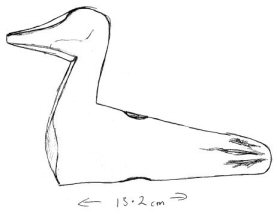
Fig 2: Duck carved from antler, Birka, 8th to 10th century.
Horses were used extensively by Norse settlers for transport and farming. They were saddled for riding, they pulled carts and ploughs and could even be eaten. A favourite pastime among adults was horse-fighting, which may go some way towards explaining the sheer number of miniature horses found. Lesser domestic animals were also modelled as playthings, if rarely. There are only two extant animal figurines, other than horses, which are dated to the correct period and that may have been toys. Dated from the eighth to the tenth century, they come from Birka, a trading settlement in Sweden. Both these items were recovered from the area known as the Black Earth. This was the residential part of town, where the earth has been discoloured by soot and other refuse from domestic buildings. The first item, a duck in silhouette, is carved from elk antler, and has a vertical perforation through its body at the shoulders. Possibly it was once mounted on a rod. The length of this piece is 13.2 cm, and it is 2.1 cm thick. The second is a three-dimensional cat, much smaller at only three centimetres long and one thick. This sculpture was carved from amber, and the use of such a precious material may indicate that it was a talisman rather than a toy, whether or not it was used by a child. (Viking Artefacts, pp. 26, 215)
Brisbane cites a dog, a seal and a beaver from Novgorod, sadly without specific dates (p. 173). The existence of these figures may indicate the disappearance of a larger range of wild and domestic animals from the record of Norse miniatures. Dogs appear repeatedly in pictorial sources, making them familiar companions and likely modelling subjects.

Fig 3: An early-period horse from the Faroe Islands (http://www.angelfire.com/wy/ svenskildbiter/Viking/vikhorse.html).
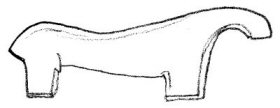
Fig 4: Model horse, Novgorod, c. 972.
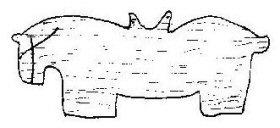
Fig 5: This example shows the characteristics of horses of the tenth and eleventh centuries (Novgorod, 11th Century).
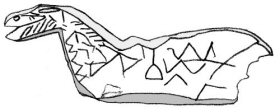
Fig 6: A horse in the twelfth-century style, with stirrups (Novgorod).
Horse toys are known from several settlement sites. At Kvivik in the Faroe Islands, a horse with defined legs, a long, thick neck and a short nose has been discovered, measuring 13.2 cm in length. There is no tail. Trondheim offers a similarly shaped beast, slightly shorter at 12.7 centimetres, which is dated 1075 - 1125. This horse has a long, defined, tail, not separated from the body of the creature, in contrast to the bobbed tail seen on some of the Novgorod animals of the same period. (Others, like the Kvivik horse, have no tail at all.) The city of Staraja Ladoga (St Petersburg) offers the earliest find, with a legless example of 13 centimetres from the eighth or ninth century. The woodgrain in this animal is cut on the diagonal rather than horizontal, and there is no tail. The neck is long and narrow with a small head. It is interesting that this early example foreshadows the platform horses found in later contexts at Novgorod. The Trondheim horse, one of the Novgorod horses and the Faroes example all have defined genitalia - perhaps representing the fighting stallions mentioned earlier.
The Novgorod horses are numerous enough to make discernable a change in fashion. During the tenth and eleventh centuries, a flat silhouette with short, closed muzzle and stubby legs is the only style. These early horses often include the shape of a saddle in the outline, and may have reins incised. Kolchin records eight finds of this style from Novgorod. The length of them varies from 9.5 to 19 cm. These horses are still in use in the twelfth century, but a new fashion also appears, leaving off the legs and placing the body of the horse on a broad low stand, or on wheels. These horses, still in silhouette, usually have defined eyes, open mouths, and an incised mane. The muzzles are shaped longer than the earlier models.
Apart from horses, the major form of transport between the far-flung settlements of Norsemen was shipping. Scandinavians sailed reliably and frequently between ports and on exploratory journeys, without the benefit of modern navigational aids. Norse shipwrights were the unrivalled masters of their craft throughout the known world, but we can simplify their achievements for the benefit of the toybox. Knarr were trading boats, broad and deep, with tall sides to increase seaworthiness and cargo capacity, while drakkar were narrow-beamed, fast warships, with many oars to reduce their dependence upon favourable winds. Lesser vessels such as dugouts and log rafts were used on sheltered waterways (Viking World, p. 43). Not surprisingly among a seafaring culture, toy boats have been recovered from various Viking settlements. Both longships and cargo vessels were transformed into playthings.
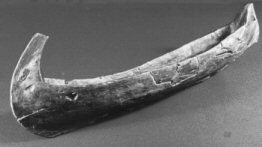
Fig 7: One of the Dublin boats.
There are three miniature ships in Dublin. The latest is of the thirteenth century, out of our time-frame. The earliest is tenth century, but I have not discovered its details. The third is a fairly complete eleventh/twelfth century model, eleven centimetres in length, with a width of just over four centimetres and the remains of a mast in the centre (Viking Artefacts, pp.25-26, 215). A much larger ship from Hedeby (prow end only) has a surviving length of 30 cm. No specific date is given for this item, but Hedeby was abandoned by 1100 AD, so it certainly falls within our defined period. Other model ships are recorded from the Faroes and Greenland, with at least one more found at Hedeby. Each vessel has been carved from a block of wood.
Returning from travel to the domestic scene, we come at last to consider the question of dolls. All extant examples of the Viking period are carved of wood. There are very few of them, in contrast to the numbers of some toys, but they do exist. It would be more surprising if no replica 'babies' were found, given the propensity of young children to copy the nurturing processes of which they are part.
One figure, discovered in the permafrost of Baffin Island, is not properly a Viking doll, belonging to the Inuit settlement on the Island. However, the doll is attired in what seems to be Norse rather than Inuit clothing, and thus offers useful support for theories of trade contact between the two peoples. This figure may be seen at http://www.collectionscanada.ca/nord/h16-4223-f.html. Apart from this isolated find, all the evidence comes from Novgorod. Here, there is no lack of human figures in various styles, yet there are only a handful identified as dolls. So what is the difficulty?
The perennial problem with archaeological research into toys is the confusion of children's dolls with religious idols and household spirits. Kolchin separates the Novgorod finds into each category, with some apparent justification. The cult-figures tend to be more intricately worked, yet seem less human and approachable. Kolchin identifies household spirits in a series of humanoid heads on rods, in shape rather like maces. These ritual artefacts are essentially a blob of a head supported on a stick, ill-balanced for handling, and their expressions are not inviting. Even though some of the dolls likewise lack limbs, they do have at least a solid shape delineating the shoulders and body, and they are of a size and shape comfortable to little hands.
In support of those figures he identifies as dolls, Kolchin states: "According to Russian ethnographic material, children draped flat human figurines in clothes" (Part I, p. 201). As Kolchin is referring to a Russian-language source, I have not been able to follow it up, but there are certainly flat figurines, which could have been so clothed. There is even occasional mention made of the possibility of Viking cloth dolls with solid heads and limbs, of which apparently the cast heads and limbs exist. I would welcome confirmation of this if I could discover any.

Fig 8: Carved doll from Novgorod, eleventh century.
Like the horses, the dolls found at Novgorod are almost exclusively fashioned from flat pieces of wood (Kolchin, Part I, pp. 201-202). One three-dimensional doll on a stand, dated to the early eleventh century, has been discovered. Kolchin does not show this particular doll, and all those that are pictured, are silhouettes. Another eleventh-century example is quite like a gingerbread-man, with head, waist, legs and arms defined, although the arms are merely stumps. Whether this is damage or intention I do not know. An early twelfth-century doll, with its lower part missing, is even simpler, with a head and a block-shape below it. The broken section begins far enough down the torso that I think it unlikely that the figure had legs. In this shape, the doll is quite similar to later, German stump dolls, which were carved in the round (from a 'stump' of wood) and generally without separate legs or arms. For the imaginative child, the 'baby' has no particular need for legs if it is wrapped in cloth like an infant. This figure does have a face - incised marks delineate the nose, eyes and mouth. Another doll, from the fifteenth-century, attests to the use of the flattened stump doll type in Novgorod, and shows crescent-shaped markings which may represent swaddling or a blanket covering the unshaped body of the doll (Kolchin, Part II, p. 452, Plate 206).The Hanseatic merchants, moving between Novgorod and their homes in northern Germany, may have been instrumental in spreading this fashion between cultures.

Fig 9: 'Stump' doll from Novgorod, twelfth century.
A small collection of items labelled as "toys, clothes for dolls" appears on the website of the Hermitage museum in Russia. They are dated eighth or ninth century, from the northern Caucasus, and the group contains a tunic, a coat with Cossack-style fastenings, and a pair of pants. Another object may be a tall boot, while two further items are unknown to me. I am unsure about the dating of this collection, as the Cossack coat does not accord with my idea of Viking clothing of this early date. A knowledge of Slavic costume might fill the gap. These items may be found on the internet at http://www.hermitagemuseum.org/ html_En/08/hm88_0_0_20_1.html.
As children grow older, they move further from the hearthside, and games of skill become a focal point. Ball games seem to be universal and ancient, and Norse children were no more deprived than the young of more sophisticated societies. Numerous wooden balls have been recovered at Novgorod, most of them between 3.5 and nine centimetres in diameter. They are carved, not turned, and roughly spherical. Eighteen come from the tenth-century layers, twenty-nine from the eleventh century, and seventeen from the twelfth century. Wooden balls continued in use into medieval times, declining in favour of leather versions in the fifteenth century (Kolchin, p. 202). Brisbane states that leather balls appear as early as the eleventh century. They are patterned in three pieces: two circles for the ends and a strip for the centre piece, sewn together and stuffed with moss, felt or cloth scraps of linen or hemp (p. 176).
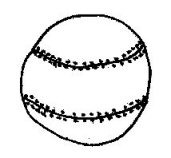
Fig 10: A leather ball from Novgorod.
Brisbane postulates that a hockey variant, using curved sticks, was played with wooden balls. Ball games are occasionally mentioned in the sagas. As might be expected, the rules are not set out for us, but the activity seems to involve pairs of players, a ball, and at least one stick. The players are teenaged boys, and it would appear that strength was a factor in the contest. Aggression is accepted - no negative remarks are made when the game becomes a brawl. (Grettir's Saga)
Even more than balls, tops have been discovered at Novgorod in enormous quantities. There are 52 examples from the tenth century, 36 from the eleventh and 38 from the twelfth century. It seems as though almost every child in the city must have had one, considering the small percentage of other toys that have been recovered, a thousand years after the fact. Brisbane differentiates between two types of top, both of which he states were in widespread use in Novgorod from the tenth century. The volchok has a hollowed-out top, producing a whirring noise as it is spun, while the kubar is a larger, heavier top. (p. 176) From personal experiment and the advice of people who make modern turned tops, dishing out the top causes it to turn onto its head when spun. The whirring reported in Brisbane has not been reproduced thus far.
During his regrettably sparse discussion of mechanical toys, Kolchin deals thoroughly only with tops, of which over a hundred date from the Viking period. They are all carved; turned tops appear at Novgorod only in the thirteenth century. The shape and size of Novgorod tops remains standard throughout the Viking and Medieval periods - a bullet-shape, fairly squat, five or six centimetres tall, with a diameter of four or five centimetres. Most of them are undecorated, but some have incised decoration on the top surface, swirling into the centre - these may be Brisbane's volchok, as the shape appears to be hollowed out as well. (Kolchin, Part I, p. 202.)
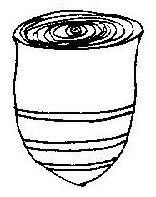
Fig 11: Carved Wooden top from Novgorod.
Away from the rich pickings of Novgorod, a single eleventh-century turned maplewood top, found at Winchester, does come within the possible range of Norse toys, but most likely belongs to the English tradition. Winchester itself came under the dominion of Svein Forkbeard for only a few weeks before his death in 1013. Another Danish King, Cnut, ruled England, with Winchester as his capital, from 1016, but it is unlikely that the southern part of England was ever Viking in culture. Maple was used, especially for turned objects, in Novgorod. I am unaware of whether maple was available to English craftsmen, and this unique top is not bullet-shaped, but pointed at both ends (Biddle, p. 707). On the whole, this item seems doubtful as a Viking artefact.
Other games suitable for older children employ bones saved from the slaughter yards. Large quantities of knucklebones, discovered at every level of excavation, highlight the prevalence of pursuits involving such bones throughout the history of Novgorod (Brisbane, p. 176). These versatile little bones can be used for gambling pieces or as game counters, which points more to adult pastimes, but the tossing and catching game of jacks has certainly been enjoyed by generations of children, as it still is today. Bones appear to have formed the basis of several pastimes that would have suited both youngsters and their elders.
The earliest propeller toy cited from Novgorod is that discovered in a twelfth-century context. This puts propeller toys on the edge of the Viking period, and up to two centuries earlier than they are documented elsewhere. Both horizontal and vertical styles are recorded - the definition is dependent on how the stick is attached (think of the difference between helicopter vanes and the sails of a windmill). Kolchin does not specify to which category this earliest reference belongs. Medieval children are pictured using propellers, often in concert with a stick-horse, as a jousting prop. Jousting was not a sport indulged in by the Viking culture (wrestling matches seem more their style), although this need not compromise the archaeological findings. It is always possible that the children simply enjoyed the movement of the vanes, without automatically turning them into weapons.
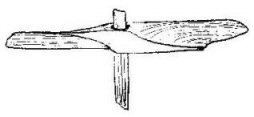
Fig 12: A horizontal wooden propeller from Novgorod.
There are some gaps in the information presented here. In particular, I would like to know more concerning toys of materials other than wood, and about the mechanical toys glossed over by Kolchin. Brisbane appears to rely for much of his knowledge on the work of a Russian woman, Nadezdha Morozova. Her study, "Toys in Medieval Novgorod", sounds like a mine of useful information, although the paper is only three pages long. I have yet to discover a copy of it. Mark Brisbane has edited a new book, due out in December 2005, entitled Wood Use in Medieval Novgorod (from UCL Press), which he tells me contains a full chapter on the toy finds. I will be awaiting its publication with great anticipation.
One aspect of other traditions, that seems to be absent from the Scandinavian vista, is that of people mounted on horseback. There are dolls, and of course horses by the bucket load, but no mounted figures, despite the popularity of this design among the toys of Western Europe. Novgorod has not disclosed such figures even for the later medieval period. We know the Scandinavians used horses for riding; perhaps the absence of these toys simply reflects the lack of a tournament culture.
Now that we have considered the evidence, what can we put into our Viking Hoard? It is worth emphasising that almost everything will be made of wood. There is no certain evidence of coloured toys, but colour deteriorates fairly completely in the burial conditions of Viking sites. If you do wish to paint your playthings, the colours favoured by Scandinavians for woodcarving and runestones (where such traces exist) were red, blue, brown, black and white, with some use of yellow (Viking World, pp. 138 - 9).
Painted or plain, naturally there will be horses. An entire herd could be fashioned, with different sizes representing foals, mares and stallions (with appropriate shaping, of course!). Depending on your choice of time period, horses might possibly be of two styles, some having legs and others on stands. Platform horses could run on wheels, with a cord to pull them by.
You may wish to branch out into other types of animal. Check what animals would have been known to your persona for ideas. Those with more time and sculptural ability might carve three-dimensional figures, but silhouettes cut from flat pieces of wood will fit in perfectly with the fashion of the times.
While we're cutting flat shapes out of planks, dolls are definitely needed. Cut some with defined limbs, representing older people or children, and others, unshaped from the neck down, to represent infants. Scratch eyes and noses onto the faces if you like, and wrap the babies in cloth to keep them snug.
Swords are also just bits of plank, really, with some shaping for realism and comfort. A stick off the ground will do in a pinch, or you could do some more research into full-size weapon styles, and cut your wood to suit a particular time and place. Use incised markings to indicate the decorative work on the real swords. Spears are similarly easy to design, while bows in the correct style may be a little trickier.
Late-period Vikings might consider a propeller or two, which requires some skill in carving - but not too much.
Tops are easily made from a lump of wood. Once you have the basic shape, add some grooves and start spinning. The whip can be as simple as a piece of string on a short stick, although using it to set your top - and keep it spinning - may require something of a knack. Alternatively, tops can be spun by hand. (My husband dashed off to his shed and knocked one up for us the other day. He used a chisel to carve out a rough shape from a chunk of 45 x 45 mm wood, and a rasp to smooth it into the required bullet form. After a little practice, he could spin it rather successfully.)Lots of space, and probably supervision, are required when tops are used with cord, as they make fast and unpredictable missiles.
Balls can be made of leather - they are quite easy to design (see pattern diagram). Stuff the leather cover with wool scraps or moss, as hard as you can. Wooden balls can be bought fairly readily, or you can use your rapidly increasing carving skills. The originals are only described as "roughly spherical", so there's no need to be too pedantic about getting them perfectly round.
Haven't you always wanted your very own Viking longship? Find a suitable chunk of wood and consider hollowing out a few lengths to make boats. Don't forget to pierce oarports along the entire length of the deck, and add a mast and a squarish sail. The ratio of length to breadth should be 7:1, with a long, straight section in the middle between the pointed bow and stern.
Cargo ships are needed, too; with a ratio of 4:1, they are much broader for their length. They also have decking at each end of the ship, with only a couple of oarports at each end, and the cargo 'hold', open to the elements, around the mast in the centre.
Miniature bowls can be made out of soapstone. Try a lapidary club or an art supply shop to get hold of some raw material. Steatite (soapstone) is fairly cheap and soft enough to carve with something like lino-cutting tools. Make some cups and other vessels in Norse style, while you're at it, and you'll have a whole miniature kitchen before too long. Clay is also a good candidate for crockery of all sorts and sizes.
Finally, start saving knucklebones from legs of lamb. They will need some cleaning up before you can start playing: repeatedly boiling and scrubbing them is one method, or you can leave them near an ant's nest for a couple of weeks.
The selection discussed here offers playthings for all ages and preferences. Most of the items are carved out as simple, blocky designs, which can readily be shaped and smoothed to make them suitable even for very young children. They will certainly chew on them, so be careful not to finish your creations with anything toxic. Children of differing temperaments may be drawn to the drama of war toys, or gravitate towards quieter play with a few kitchen utensils. Ships, balls, animals and dolls can be enjoyed by all ages, while older children will enjoy the physical challenge of a top or a set of bones. You may be surprised at how much joy these simple playthings bring to your children.
As we have seen, there is sufficient scope for authentic toys to be created. The materials are cheap and readily available; the forms are simple to reproduce. Viking children were not much different from their modern counterparts, and the archetypal toys of their age still serve the needs of growing minds and bodies. With the wealth of knowledge available through archaeology, and a little imagination, every modern Viking can be well equipped at playtime.
(All Internet references were current as at August 2005.)
..., The Story of the Volsungs (Volsungasaga), Gutenberg Project Etext, December 1997, ftp://ibiblio.org/pub/docs/books/gutenberg/etext97/vlsng10.txt
..., Grettir's Saga, Chapter XV (Games at Midfjordvatn), http://www.sunsite.berkeley.edu/OMACL/Grettir/gr1-18.html
www.civilization.ca/media/docs/fsvik04e.html (images of a horse and boat from the Faroes, and one of the Baffin Island doll)
http://www.hermitagemuseum.org/html_En/08/hm88_0_0_20_1.html (image of doll's clothes, and another of two wooden swords and a spear)
http://www.scran.ac.uk/RB/images/thumb/0098/00984728.jpg (image of steatite bowl)
http://www.shetland-heritage.co.uk/amenitytrust/archaeology/unst/UNST4.JPG. (image of steatite millstone in someone's hand)
http://www.vikinganswerlady.com/scotland.htm (Information about the steatite millstone)
http://www.collectionscanada.ca/nord/h16-4223-f.html (image and information about the Baffin Island doll)
Biddle, M., Object and Economy in Medieval Winchester, Oxford, Clarendon Press, 1990, pp 706-707.
Brisbane, M., The Archaeology of Novgorod, Russia: Recent Results from the Town and its Hinterland, Lincoln, The Society for Medieval Archaeology Monograph Series, No. 13, 1992.
Earwood, C., Domestic Wooden Artefacts in Britain and Ireland from Neolithic to Viking Times, Exeter, Uni of Exeter Press, 1993.
Foote, P. G. and Wilson, D. M., The Viking Achievement, London, Sidgwick and Jackson, 1980 [1970].
Graham-Campbell, J, The Viking World (Revised Edition), Leicester, Frances Lincoln and Windward, 1989 [1980].
Graham-Campbell, J., Viking Artefacts: A Select Catalogue, England, British Museum Publications Ltd., 1980.
Haywood, J., The Penguin Historical Atlas of the Vikings, London, Penguin, 1995.
Kolchin, B. A., Wooden Artefacts from Medieval Novgorod, Part I (text) & Part II (illustrations), Russia, BAR International Series 495 (ii), 1989.
Ollerenshaw, I., Of Horses, Tops and Flanders Babies: Medieval and Renaissance Toys, Canberra, Privately published, 2005.
Petersen, Neil, Viking Era Pastimes, http://www.treheima.ca/viking/pastimes.htm
Wyley, S. F., How to Make a Viking Toy Horse, on the internet at http://www.anglefire.com/wy/svenskildbiter/Viking/vikhorse.html
Copyright India Ollerenshaw 2005. Free use for non-profit.
An earlier version of this article also appeared in Cockatrice.
Joan & Crispin's Homepage: https://wotnot.squanderlings.com/